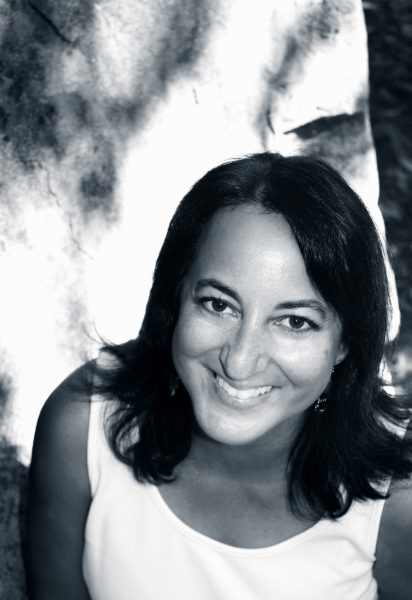Tara Masih will be giving out two autographed copies of Best Small Fictions. One copy will go to the author of the story she selects for publication. The other will be given to someone who follows us (@SmokeLong) on Twitter and tweets at us the title of his or her favorite story from SmokeLong Quarterly Issue 49 during Tara’s reading week.
Annie Bilancini: In your foreword to BSF, you pose the question, “Why do we feel compelled to declare that anything is a best of?” And you answer that it “provides a rubric that’s necessary for evolution and improvement.” I like that way of looking at an anthology quite a lot. And I’m curious about what your own personal rubric would look like. What stories do you turn to for instruction? What stories and writers would you want to include in your own personal Best Of?
Tara: I like to draw on both classic and contemporary brief stories. There are anthologies that have done this, edited by the Howes, Redfern and David, Shapard and Thomas, and Alan Ziegler. They’ve all done wonderful jobs of pulling together some of the best writing in this genre that has been written worldwide. I’ve taught Kawabata, Tagore, Ana María Shua, Martone, Dybek, Flick, Chinquee, Budzko, Merkner, Randall Brown, and Jayne Anne Phillips. There are more, but the work of these writers has been a good eclectic mix of styles and visions in the classroom. I have to say, though, that all of us working on Best Small Fictions were surprised at the variety and depth of the work we discovered published in just one year. It was extremely hard to narrow down the nominations to 105 finalists. There are for sure some contemporary classics in the 2015 volume that will stand the test of time.
AB: Some of the selections in the anthology come from works put out by small presses. What kind of relationship do you see between flash fiction and small presses?
The small press is vital to careers of writers who are concentrating on brief fiction. Very few crack the big presses with their flash collections, and the work deserves to be compiled, recorded, read, and saved for the next generation. So I see small presses as providing the important job of archiving this genre. For example, Hemingway’s first version of In Our Time was published in a chapbook print run of just 170, and Jayne Anne Phillips published two limited edition chapbooks that broke with traditional form and later became Black Tickets. So small presses started two important careers.
AB: I imagine organizing an anthology is different than organizing a collection especially when flash is involved. Was there a specific organizing principle in mind?
The challenge with organizing a flash collection is that the stories are so very short. While I’ve never compiled a poetry anthology, I imagine it’s the same issue. You don’t want people to have a sort of staccato reading experience. I can’t give you any specifics on organizing. I’ve been organizing collections (as a manuscript consultant) and anthologies for many years, so I have an instinctive method that’s all in the flow and voice and subject matter. Organizing 55 authors may seem daunting, but keep in mind by the time I get to that stage, I’ve read the stories 20+ times. I know their rhythm, their settings, details that stand out, the heart of the piece. I guess I am going to give away the fact that it took me 3 hours to arrange all 55. Even I was surprised at how fast it went. In terms of underlying principle, I hope the book as a whole takes readers on a journey.
Megan Giddings: A story of yours I really love is “The Mystery Spot.” Can you talk a little bit about the process of writing it? I’m especially interested because I think the usual course for a story like this that spans many years is to have the main character return to the exact same spot having changed.
Tara: Thank so much for saying that! I really appreciate it. One reason I’m doing BSF is because literary writers often feel they are writing into a void. Myself included. So thank you. I know “Mystery Spot” breaks some rules in flash. I’ve seen it written many times: “There’s no room in flash for back story.” I enjoy experimenting and don’t believe in any restrictive rule when it comes to being creative. So I worked backward. I knew the ending. I wanted to put someone in the MoMA exhibit. But I wanted it to have heavy import. I had to create a character who’d suffered (or almost suffered) a tragedy that would leave her more open than most to the rain room experience. I can’t exactly recall the trail now of how I got her back to WW II. But I had found information on the real Mystery Spot, which to me paralleled the MoMA exhibit. The character grew from there. It’s one of those stories I love to write, where I have some idea of where it’s going but until I’m working it, I don’t know the full story. So she may not have returned to the exact location, but it’s a similar one.
MG: What advice would you give writers who are trying to write work influenced by setting?
I tell beginners that all five senses are very important. Observation has to be intense in all the ways we look at setting. If you have not physically been to a place, do your research. Don’t get lost in setting at the expense of plot or character, but make the setting a solid foundation on which your characters can evolve. It can become a second character, but should not dwarf your main one.
MG: In ten words or less, define flash fiction.
An art form shining microscopic spotlights on one deep truth.


 A SmokeLong Summer 24!
A SmokeLong Summer 24!